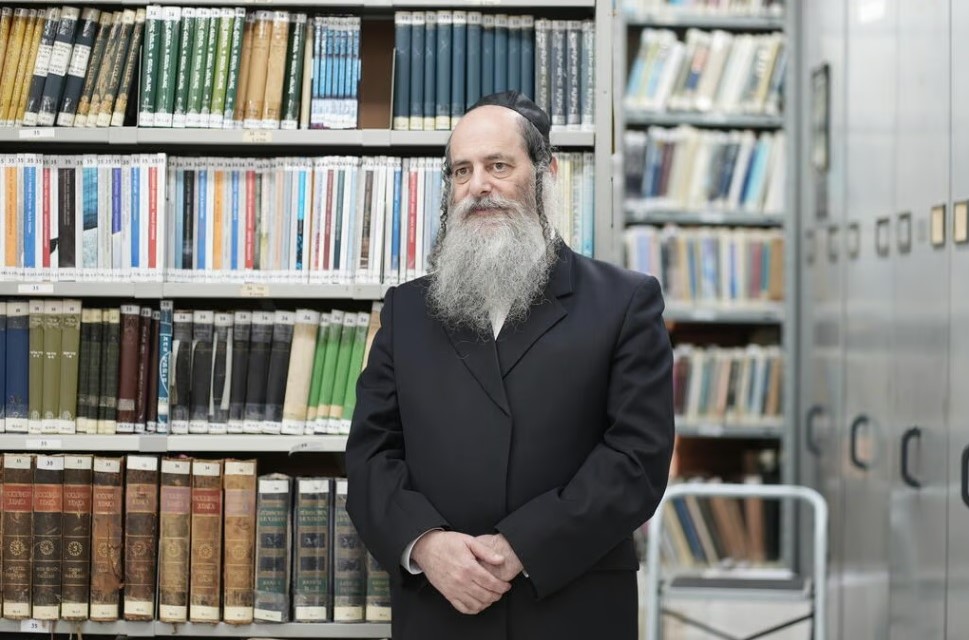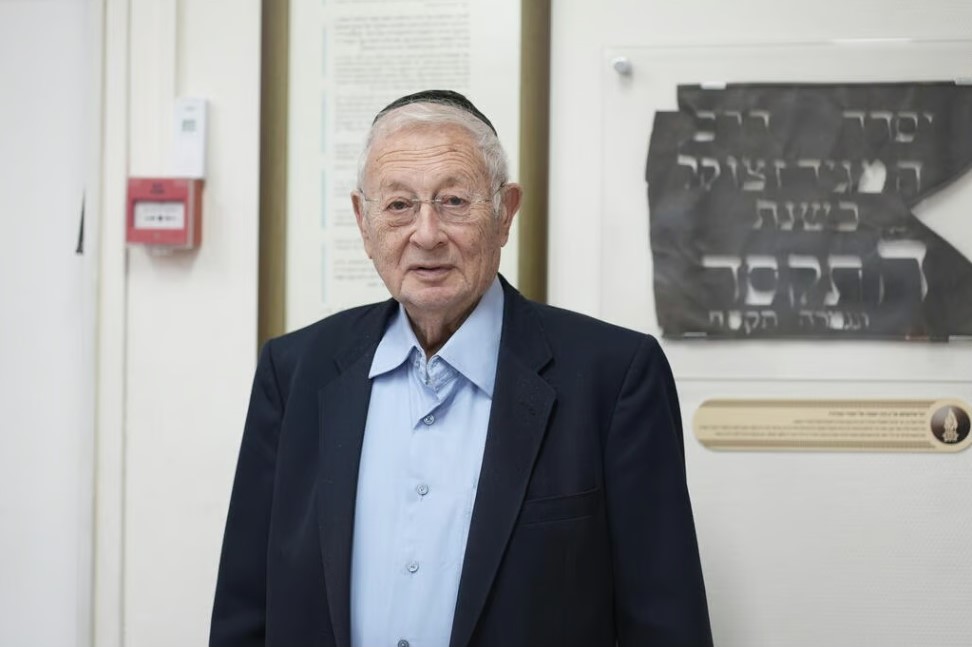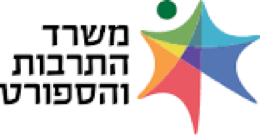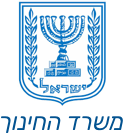By: Shmuel Munitz – This article originally appeared in Hebrew on Ynet (Yediot Achronot) and can be be found here.
Even after the Holocaust, they kept their faith that had helped them in difficult circumstances. A portion of them never gave testimony over the years simply because there was nobody who would understand their culture. In honour of Asara B’Tevet (the 10th of Tevet fast day), the general day of Kaddish recitation, we visited Ganzach Kiddush Hashem which operates in the charedi (strictly or ultra-Orthodox) society and documents Holocaust survivors over the years for commemorative and education purposes. This year, the organization collected more than 100 testimonies from survivors who had never been interviewed before about their stories.
The question of “Where was G-d during the Holocaust?” has occupied many throughout the years, until this very day. On the day after World War II, in the face of the magnitude of the disaster and the destruction of communities, believing Jews picked up the pieces and were left with many unanswered questions. Among them was also the Rebbe of Vizhnitzer chasidism, Rabbi Chaim Meir Hager, who was known as the “Imrei Chaim” after the title of his book.
In his first video testimony about his family story during and after the Holocaust, Mordechai Edell – a native of Antwerp who was only one year old when the Nazi Germany’s forces invaded Belgium – told about an event that took place after the war: “The Rebbe of Vizhnitz came to Antwerp and settled there in preparation for moving to the Land of Israel. On the first Yom Kippur after the war, the whole synagogue was full and the Rebbe came on stage to speak words of awakening. It was a difficult time, people were very sad about what happened. There are those who lost their entire family and were left alone.”
“Then the Rebbe opened the Ark of the Covenant and began to say: ‘Master of the World, look at what you have done to us. We came back broken and torn from this whole story.’ He began to cry and speak; I was a child then but I remember it. People cried, and when I remember, I cry myself. He finished: ‘Master of the World, we forgive you for what happened – now you forgive us,’ Then he said to the prayer leader: ‘Begin the Kol Nidrei prayer,’ and that is how the prayer began.”
Edell’s father enlisted in the Belgian army. He was captured by the Germans, was released after a few months, and then fled to Vichy France and from there to Switzerland. Little Mordechai and his mother fled to England. Later, the family returned to Belgium, and in 1950, immigrated to Israel. Edell’s testimony from the past year is one of many documented by Ganzach Kiddush Hashem, the leading Holocaust archive and commemoration institution in charedi society.
Tova Yoskovich, who established the video testimony project at Ganzach Kiddush Hashem: “There was apprehension, and it was difficult to reach this community. We needed the consent of the rabbis for those Holocaust survivors to provide these testimonies, so that future generations would know.”
Collecting testimonies from Holocaust survivors who belong to the charedi sector often involves unique challenges. Tova Yoskovich founded the Ganzach Kiddush Hashem video testimony project 23 years ago, and says that it was not easy to recruit witnesses at the beginning. “It’s visual, on video, and it’s about people who didn’t have a television at home. There was apprehension, and it was difficult to reach this community. We needed consent from rabbis for these Holocaust survivors to do it, so that future generations would know,” she says. “The voice of the charedi community was not heard enough, and the general public did not understand the language of this sector enough – when talking about life before the war, the shtetl (Jewish town), and their concepts.”
Testimonies That Have Not Yet Been Heard
Ganzach Kiddush Hashem was established in 1964 by the Holocaust researcher, Moshe Prager, for the purpose of commemorating the Jewish spiritual strength during the Holocaust. The baseline concept of the organization is that heroism in the terrible days of the Holocaust manifested not only in rebellions in the ghettos, but also in the dedication of the soul and the insistence on maintaining the Jewish way of life under the terror of the Nazis, even in the extermination camps. The organization is supported by the government by the Ministry of Culture and the Ministry of Education, and is also assisted by donations and assistance from the Claims Conference. The video testimonies from the past decades were added to the written evidence collected earlier.

Zvi Skulski, CEO Ganzach Kiddush Hashem. “Yad Vashem enounters difficulty reaching charedi Holocaust survivors” (Photo: M. Mosbacher, Gazach Kiddush Hashem)
In honour of Asara B’Tevet, the general day of Kaddish recitation for Holocaust victims whose date of death are unknown, we went to visit Ganzach in Bnei Brak. Rare for a charedi institution, on the wall hangs a framed scan of the Declaration of Independence with the signature of David Ben-Gurion, given to Moshe Prager on the 25th anniversary of the State of Israel. Zvi Skulsky, the CEO of Ganzach, is a Ger chasid with a bushy beard and curly sidelocks. “Today we have over 3,000 testimonies,” he says. “700 testimonies were taken in cooperation with Steven Spielberg’s Shoah Foundation. Several hundred more testimonies were filmed in cooperation with Yad Vashem, who contacted us and said they were having trouble entering the charedi community.”
“Spielberg saw at the time that the testimonies of Torah and mitzvah observing people were not included enough in his testimony collection project, because they were not aware of its publication or because they were suspicious,” Yoskovich points out. This is where the organization comes into play. Tehila Dror, the director of the archive, explains that “every piece of evidence and item that comes here is saved with keywords, in the most detailed way possible. Researchers and students come here, go through the material, and prepare papers and research studies from them.”
This year, Ganzach collected testimonies of many Holocaust survivors who were interviewed about their stories for the first time in their lives. “Last year, the Ministry of Social Equality launched a project to document Holocaust survivors, and allocated a sum of several million shekels to document those who had not yet been interviewed. Yad Vashem encountered difficulty in reaching charedi Holocaust survivors, and it approached us with a request to cooperate. This year we have already interviewed about 150 new Holocaust survivors that haven’t been interviewed anywhere before. This is a huge achievement for our archive,” says Skulski.
“I decided to go with the Jews, unexplainedly”
89-year-old Michael Urich was born in Tarnopol, Poland (currently Ukraine) in 1934. He was orphaned as a child and lived in disguise in the home of a Pole, Helena Stachowicz, a Righteous Among the Nations. In 1944, after the Polish uprising in Warsaw, the Stachowicz family was deported to the Buchenwald camp. Michael survived the Holocaust and immigrated to the Land of Israel in 1946.

Michael Urich. Survivor of Buchenwald and founder of an information centre for Holocaust survivors in Bnei Brak (Photo: M. Mosbacher, Ganzach Kiddush Hashem)
He has lived in Bnei Brak for almost 80 years already, and there he became closer to religion and wears a black kipa. For five years, he lived in the Institution for Child Holocaust Refugees founded by Rabbi Yosef Shlomo Kahaneman, head of the Ponivezh Yeshiva. “What happened to me gave me perspective and led me to believe and to be faithful to the path I chose,” he says. Later, Urich established an information centre for Holocaust survivors in Bnei Brak, and for many years he has been assisting survivors in exercising their rights. At the state opening ceremony in Yad Vashem to mark Holocaust Remembrance Day 5762 (2002), he lit one of the six torches.
“When the Buchenwald camp was liberated, I was with Ms. Helena. Rabbi Yaakov Avigdor, who after the liberation of the camp was a rabbi in the Polish army and later was the rabbi of Mexico, asked Ms. Stachowicz: ‘Do you have a Jewish child?’ And she answered: Yes. Then she said to me: ‘You have the option of going with the Jews, or staying with me.’ What would a normal person do? She did my laundry, looked after me, gave me food, and I knew her. I had no one in the world, but at the age of ten and a half I decided to go with the Jews, without any logical explanation. I saw that Providence that was watching over me,” he tells.
Holocaust survivor, Michael Urich: “I was amongst the first who studied in the Ponevezh Yeshiva after the Holocaust. In my opinion, the fact that there is a certain sector that sits calmly on the tradition that was and continues to be, gives inspiration to the people of Israel.”
What do you think about the attitude of charedi society to Yom HaShoah in Nissan? There are those who do not stand for the siren and prefer, for example, to read Psalms instead. “Anything that mentions the Holocaust – on the tenth of Tevet, on January 27 or on the 27th of Nisan – keeps the memory of the Holocaust alive. If they did not write about Tisha B’Av in the books, and did not fast during it, it would also be forgotten. As much as can be done – should be done. Six million perished in the Holocaust, and the memory is being forgotten. By the way, I suggested that on International Holocaust Remembrance Day, on January 27, a Holocaust survivor should come to the Knesset and speak before the elected officials – but they didn’t get back to me.”
The Torah world suffered a heavy blow in the Holocaust. Against the backdrop of the desire to preserve the embers of Judaism, to what extent do you think it is particularly important to preserve the world of yeshivot, which is often attacked in light of the recruitment issue? “I was among the first to study at the Ponovezh Yeshiva after the Holocaust. Rabbi Kahaneman, of blessed memory, was affected by the Holocaust himself – his wife and children perished in Lithuania. He and one other son were saved. In my view, the fact that there is a certain sector that sits calmly on the tradition that was and continues to be, inspires the people of Israel, which is divided and faces all kinds of problems.”
Regarding the massacre carried out by Hamas terrorists on October 7th, Urich says: “It’s destruction, it’s not a Holocaust. When there’s a state, there’s security and there’s an army, it’s a destruction. In the Holocaust, it was done systematically over five years, and there was no way to defend myself. I was in the Yom Kippur war, I helped the chevra kadisha (the group that prepares bodies for burial) as part of the military rabbinate, and there were close to 2,700 dead. This magnitude is more similar to the war that is happening now.”
Since the beginning of the current war, we have seen a disturbing increase in antisemitism in the world. There is a feeling that the world has not learned any lesson from the Holocaust. “The world will never learn. Antisemitism was covered with a blanket, and as soon as there is an outbreak – everyone jumps on the bandwagon. This is not a novelty. Abroad, I don’t walk in the street with a kippa either. I’m going with a casket hat.”
Conversations with the Master of the World
One of the examples of the attitude of a believer who clung to his faith even during and after the Holocaust can be found in the video testimony of Elyakim Holland, the son of a Satmar chasidic father and a mother whose parents were Vizhnitzer chasidim. He survived Auschwitz, but his parents perished in the extermination camp. When he was asked about the faith that remained with him as a child and a young man in hell, he replied: “From childhood, I learned and received Torah and fear of Heaven. This sustained me during this difficult period. I knew many Psalms by heart and also the book of Song of Songs, I prayed Shabbat prayers, I sang the Shabbat songs to myself. There were times when I talked to G-d. I saw a bird chirping on a tree, I said to it: ‘Go up and tell G-d what is going on here’. I felt close to G-d, and that is what gave me life and allowed me to endure.”
Another documented testimony was given by Sarah Feigenbaum, born in 1927, who was saved thanks to the Hungarian army officer László Očkaj – a Righteous Among the Nations, who employed Jewish women in the Jewish gymnasium of Budapest, working for the German army. “One day one of the girls took out a candle from her bag and said: ‘Girls, today is when the first candle of Chanuka should be lit, and we will light a candle,'” Feigenbaum recalled in her testimony. “We were terribly afraid because we didn’t know if we were allowed to or not. We were afraid because the Nazis could burst in at any moment. We sat on the concrete floor with one single candle in front of us. This girl told us about the Land of Israel, that there is some place in the world where Jews live and try to build a Jewish state, where there are no Nazis and no antisemitism. We heard it like a story from the moon, like a legend.”
In the testimony, she repeated excitedly: “I remember me sitting in front of this lonely candle and having conversations with G-d. In my most brazen manner, I said: ‘Master of the World, if You save it from this hell, I will immigrate to the Land of Israel.’ At that moment, on the night of the first candle of Hanukkah, the decision was made. I didn’t know anything about the Land of Israel, but I knew I wanted to be there.”
Tova Yoskovich clarifies that the main goal of Ganzach Kiddush Hashem is educational. “We bring the evidence to yeshivas, to Talmud Torahs (schools), to seminaries,” she elaborates. “It’s important to emphasize that everything is done with historical accuracy. These are not just stories and tales of righteous people. We bring the evidence with precision in details and facts.” Skulsky says that in one year, nearly 120,000 students go through the educational department of Ganzach.
Yoskovich mentions that even nowadays, around the Simchat Torah massacre in the Western Negev, there are stories that express the Jewish spirit in its full force. One example is the story of the boy Ariel Zohar, whose parents and sisters were murdered by terrorists in Nachal Oz. Before his bar mitzvah, the boy asked for his tefillin (phylacteries) that he received form his grandfather, who survived the Holocaust, to be rescued from the kibbutz – and so it was.
The charedi writer Sarah Zweibel interviews Holocaust survivors as part of the Ganzach project. “I am the coordinator of a day center for the elderly in Bnei Brak, and we had a large group of charedi Holocaust survivors. Unfortunately, a large portion of them passed away,” she shares. “Some of the survivors came from Europe, but there were also many from the countries of the Maghreb. From the stories I heard about the Holocaust of North African Jews, I wrote a nonfiction book (in Hebrew) for youth and adults, called ‘The Golden Island,’ which focuses mainly on the island of Djerba in Tunisia. As a member of the third-generation since the Holocaust, I feel that the encounter with Holocaust survivors really shaped my inner world.”
Teibi Vilman, one of the interviewers in the project, concludes: “I see this as a rescue operation. I also interviewed survivors who had already been interviewed by Yad Vashem, and there are things that did not come up in the testimonies there. The question is where to direct the spotlight. In such cases, we illuminate points that were not illuminated before. Like Prager z”l said: I don’t want to tell just what they did to the Jews, I want to tell what the Jews did.”







